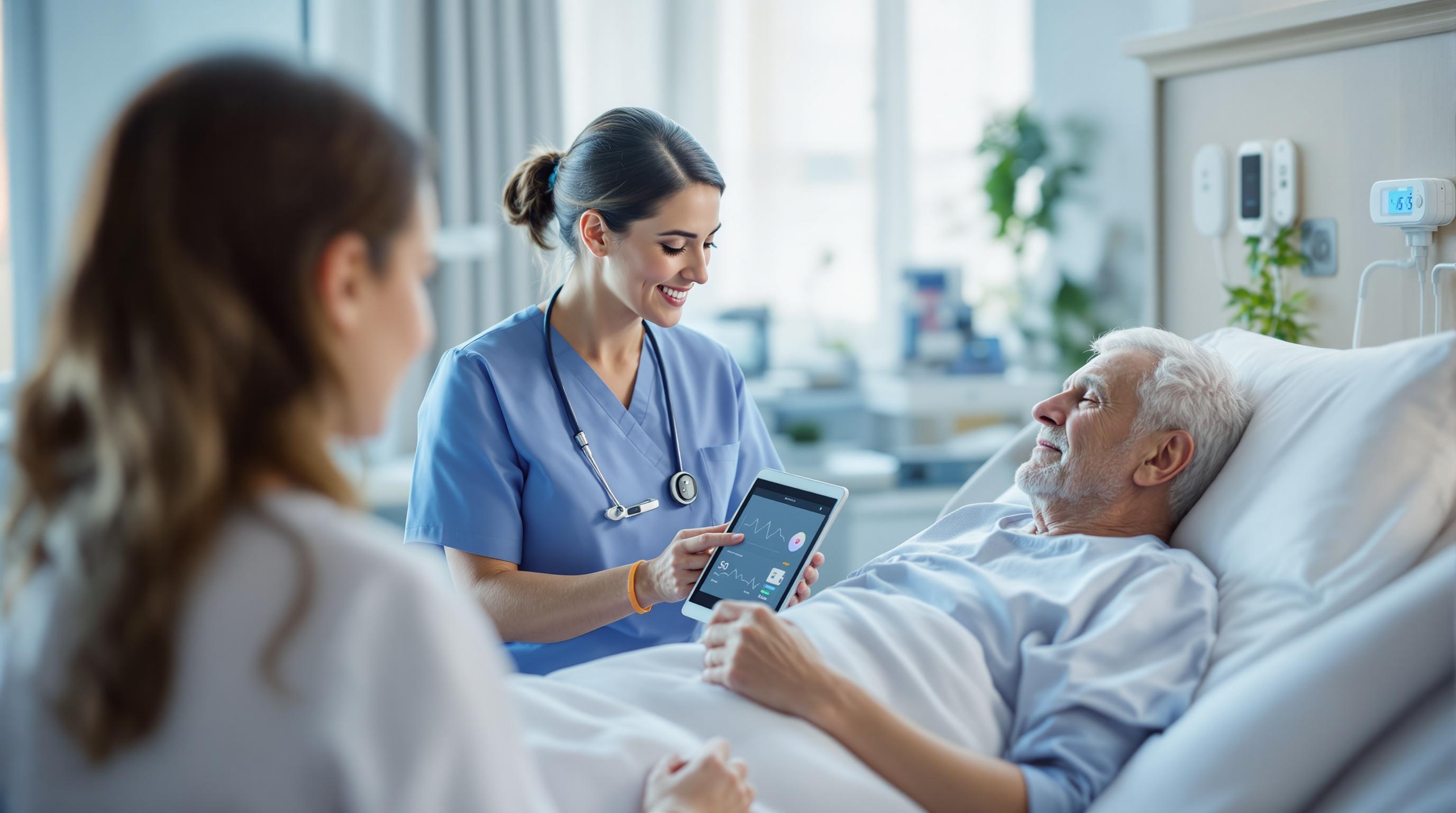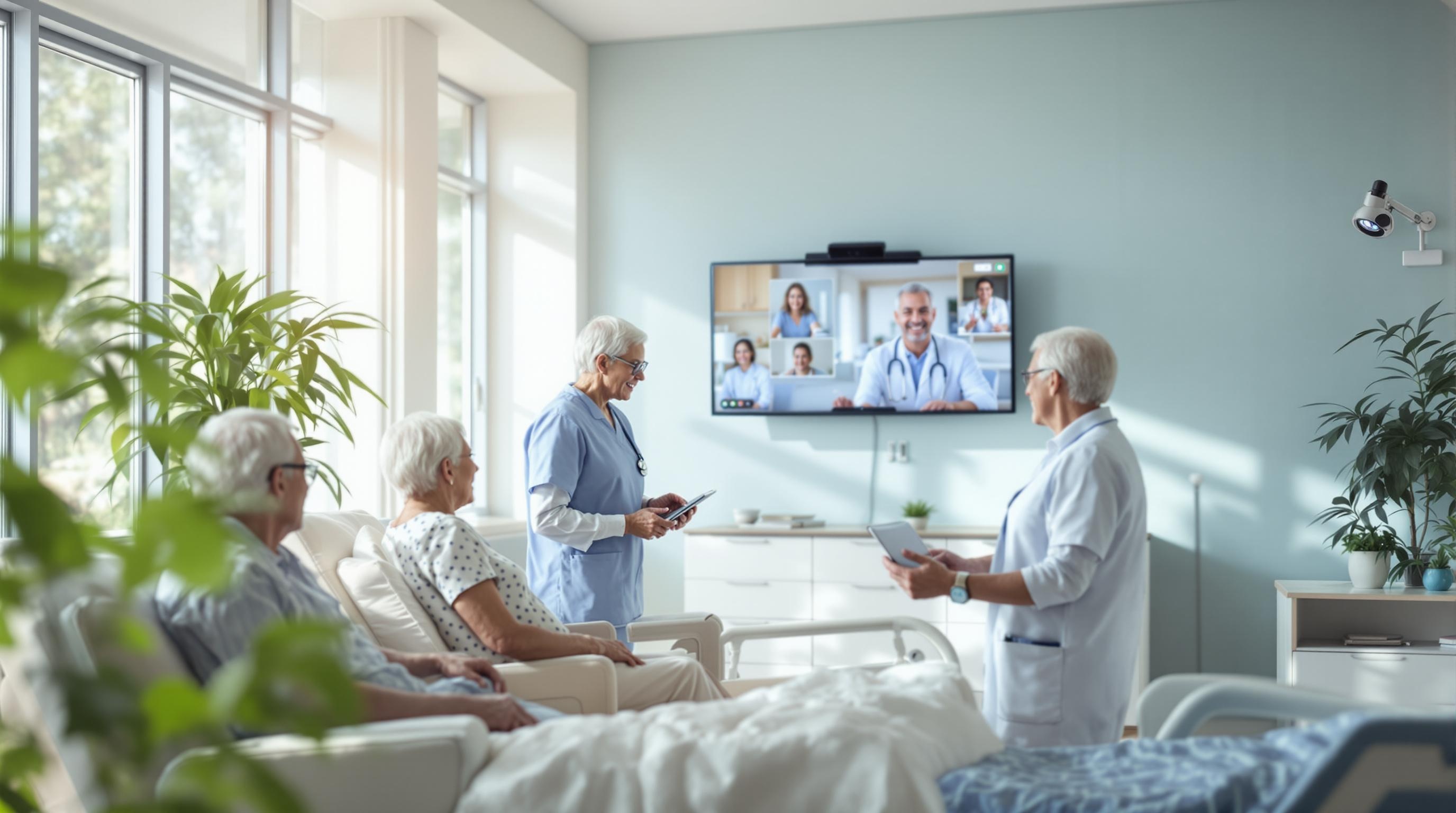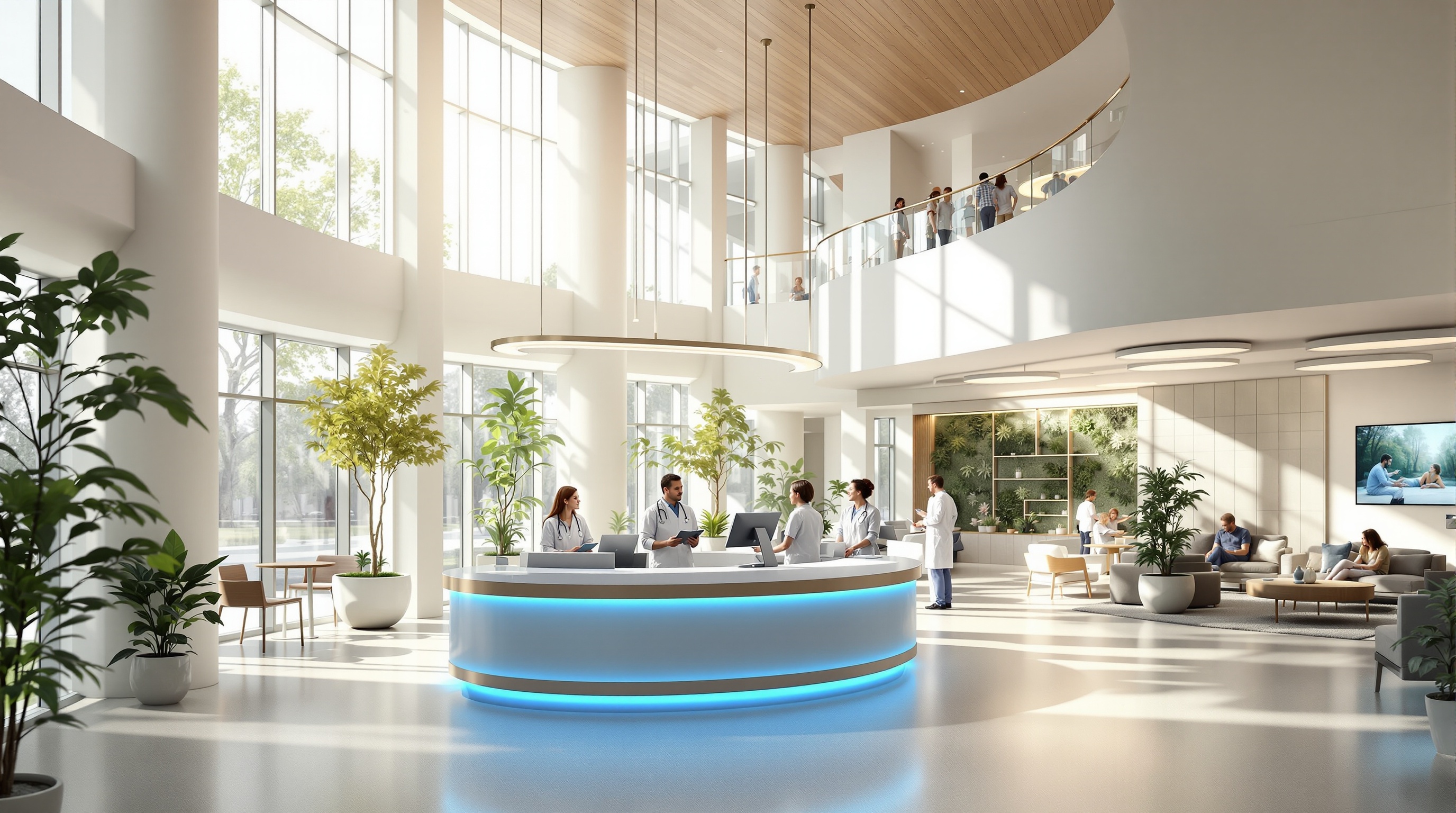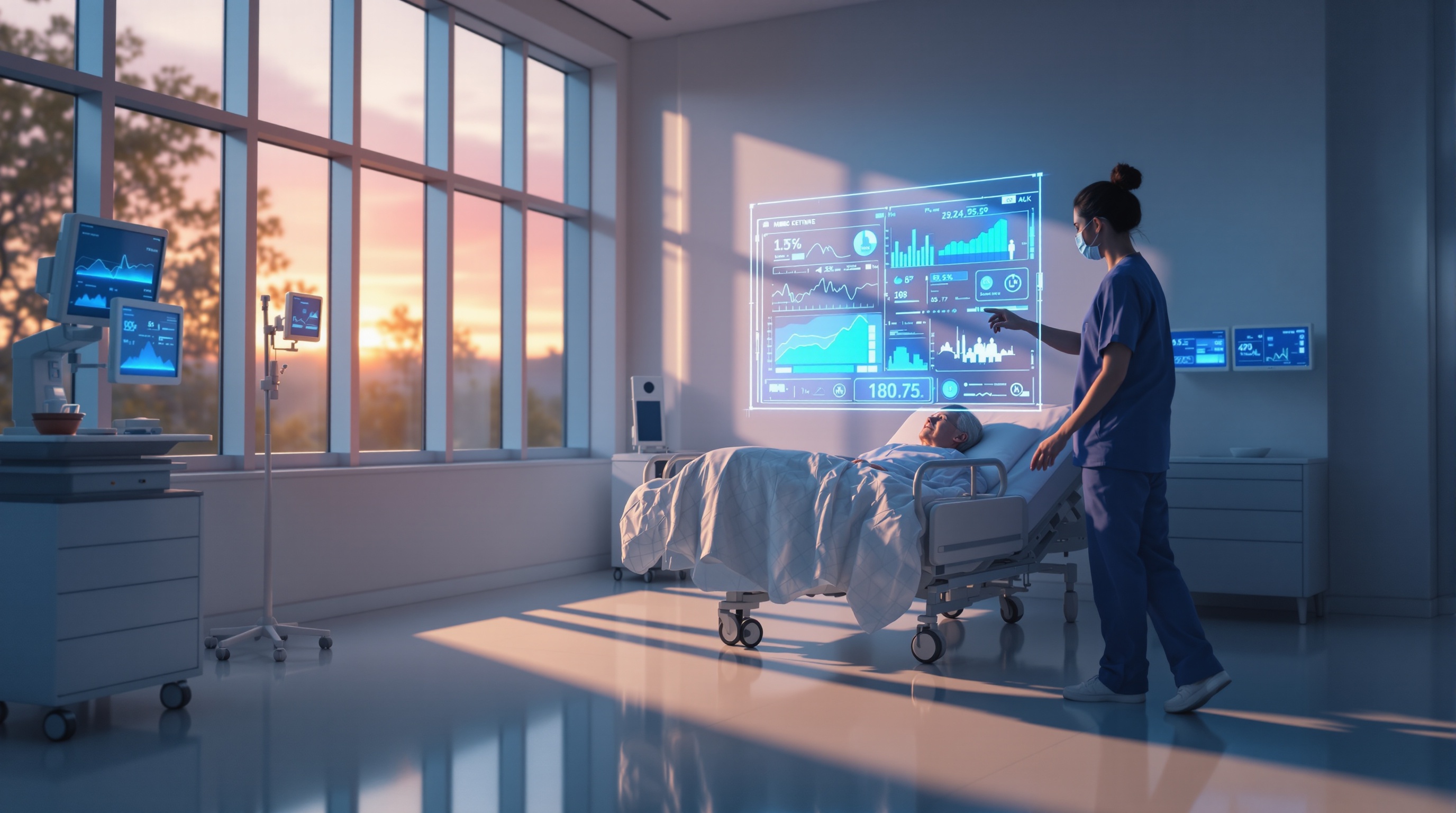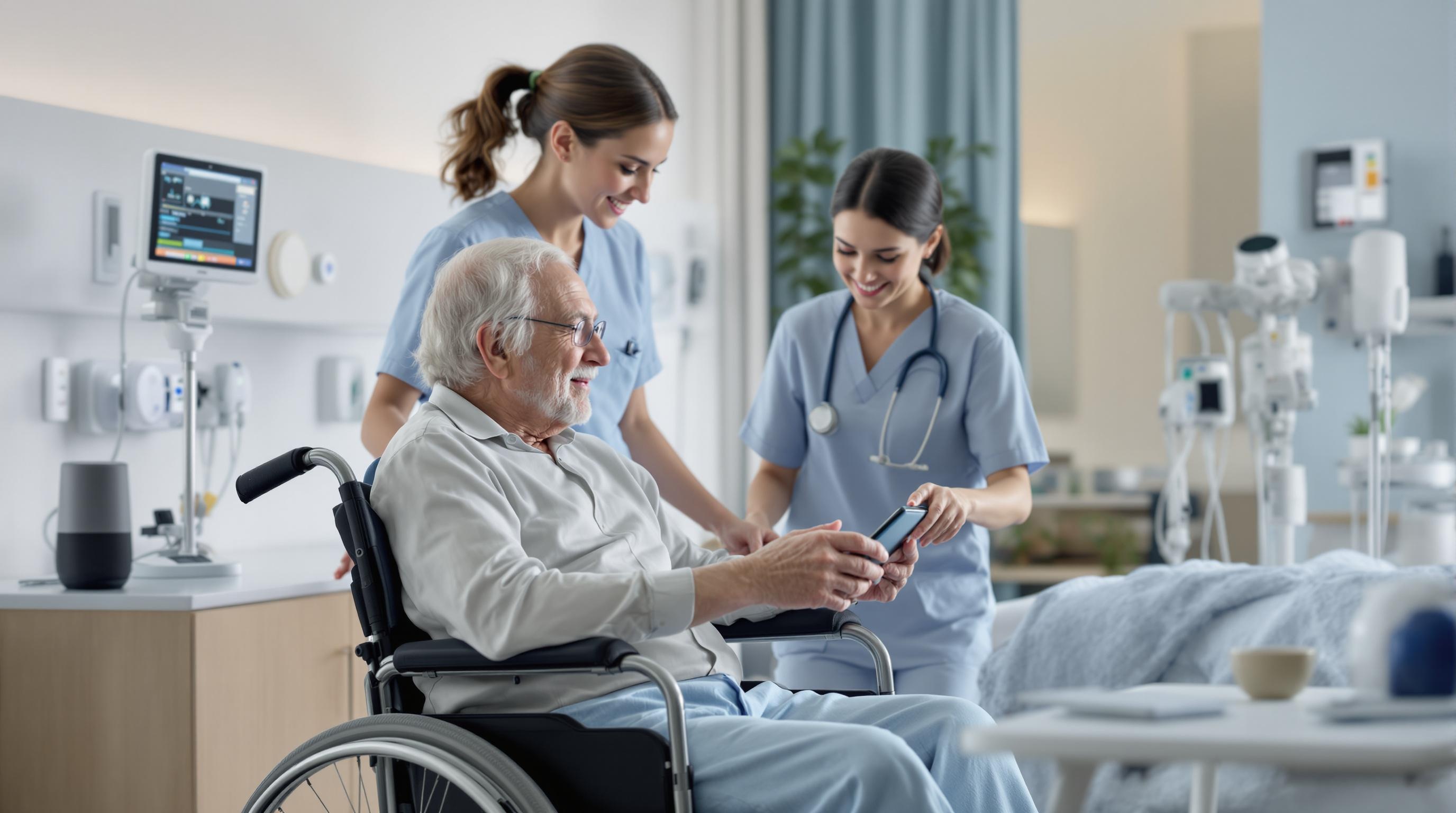Telehealth Biometric Monitoring: Revolutionizing Skilled Nursing
Discover how telehealth biometric monitoring enhances care, improves outcomes, and streamlines workflows in skilled nursing facilities.
Quick Navigation
- 1. Introduction
- 2. Current Challenges in Telehealth Biometric Monitoring
- 3. How Sparkco AI Transforms Telehealth Biometric Monitoring
- 4. Measurable Benefits and ROI
- 5. Implementation Best Practices
- 6. Real-World Examples
- 7. The Future of Telehealth Biometric Monitoring
- 8. Conclusion & Call to Action
1. Introduction
Did you know that 84% of American nursing homes had adopted electronic health record (EHR) systems by 2019, and the pace of healthcare technology adoption continues to accelerate? As skilled nursing facilities (SNFs) face mounting pressures from staffing shortages, rising operational costs, and evolving regulatory demands, leaders are turning to innovative solutions to maintain high-quality care and improve operational efficiency. Among the most promising advancements is telehealth biometric monitoring—a technology that’s rapidly transforming how patient vitals and health data are tracked, analyzed, and responded to in real time.
Despite these technological strides, many SNFs still struggle with timely detection of clinical deterioration and efficient resource allocation. Traditional vital sign checks, often performed manually and intermittently, leave gaps that can compromise resident safety and increase the burden on already stretched nursing staff. With the growing complexity of resident needs and the demand for proactive rather than reactive care, the limitations of conventional monitoring methods have never been clearer.
In this article, we’ll explore how telehealth biometric monitoring is reshaping the skilled nursing landscape. You’ll learn what this technology entails, the specific challenges it addresses, and the measurable benefits it brings to residents, staff, and facility operations. We’ll also highlight key considerations for implementation and review the latest trends shaping the future of telehealth in SNFs. Join us as we uncover how embracing remote monitoring can usher in a new era of safety, efficiency, and resident-centered care.
2. Current Challenges in Telehealth Biometric Monitoring
Telehealth biometric monitoring has revolutionized remote patient care, but healthcare facilities continue to face significant challenges as they integrate these technologies into their daily operations. From privacy concerns to technical barriers, these pain points can impact compliance, operational efficiency, and—most importantly—patient outcomes. Below are some of the most pressing challenges facing healthcare organizations today.
-
1. Privacy and Security Concerns
With the increase in remote monitoring comes heightened risk of data breaches and unauthorized access. According to research from AHIMA, telehealth systems often transmit sensitive biometric data over the internet, making them susceptible to cyberattacks. In 2022, 45% of healthcare cyberattacks targeted telehealth platforms, underscoring the need for robust encryption and authentication protocols. -
2. Interoperability Issues
Many telehealth systems and biometric devices lack standardized data formats, making it difficult to integrate with existing Electronic Health Record (EHR) systems. This fragmentation hampers seamless data sharing and can result in incomplete or inaccurate patient records, directly impacting clinical decision-making and continuity of care. -
3. Regulatory Compliance Challenges
Healthcare facilities must comply with regulations such as HIPAA (Health Insurance Portability and Accountability Act) and the HITECH Act. Biometric data is classified as Protected Health Information (PHI), requiring rigorous safeguards. However, a 2023 survey by the American Medical Association found that only 38% of healthcare providers felt "very confident" their telehealth solutions were fully compliant, indicating widespread uncertainty and risk of penalties. -
4. Patient Access and Digital Literacy
Not all patients have equal access to the devices or internet connectivity required for telehealth biometric monitoring. The FCC estimates that 19 million Americans still lack broadband access. In addition, older adults and vulnerable populations may struggle to use monitoring devices correctly, leading to incomplete data capture and potential gaps in care. -
5. Device Reliability and Data Accuracy
The accuracy of remote biometric devices can vary significantly. Issues such as connectivity interruptions, battery failures, or improper device use can lead to unreliable data streams. This not only threatens patient safety but also increases the workload for clinical staff, who must verify and interpret inconsistent readings. -
6. Increased Operational Burden
Managing and monitoring large volumes of biometric data creates additional administrative overhead. Facilities must allocate resources for device management, technical support, and data analysis, diverting staff from direct patient care. A recent HIMSS Analytics survey found that 57% of healthcare leaders cited "resource constraints" as a top challenge in maintaining telehealth programs. -
7. Reimbursement and Financial Uncertainty
The reimbursement landscape for telehealth biometric monitoring remains inconsistent. While some insurers have expanded coverage, others have not, leaving healthcare organizations uncertain about long-term financial sustainability and investment in new technologies.
These challenges collectively impact the quality and continuity of care, regulatory compliance, and the day-to-day operations of healthcare facilities. Addressing them requires a multi-faceted strategy involving technology upgrades, staff training, policy development, and ongoing collaboration with technology vendors. For more on privacy and security solutions in telehealth, visit AHIMA’s detailed analysis.
3. How Sparkco AI Transforms Telehealth Biometric Monitoring
Telehealth biometric monitoring brings significant benefits to skilled nursing facilities, but it also presents unique challenges—especially in privacy, data accuracy, integration, and workflow efficiency. Sparkco AI is purpose-built to address these hurdles, providing a secure, seamless, and intelligent platform for remote patient monitoring. Here’s how Sparkco AI’s advanced features and automation deliver solutions to the most pressing challenges in telehealth biometric monitoring:
-
End-to-End Data Security and Privacy
Sparkco AI uses advanced encryption and continuous monitoring to keep patient biometric data safe during transmission and storage. Automated access controls ensure that only authorized clinicians can view sensitive health information, meeting and exceeding HIPAA and other regulatory standards. This proactive approach minimizes data breaches and builds trust among patients and providers. -
Real-Time Data Validation
One of the biggest challenges in telehealth is ensuring that biometric data collected from remote devices is accurate and reliable. Sparkco AI automatically checks incoming data for inconsistencies or anomalies, flagging questionable readings for review. This AI-powered validation reduces the risk of clinical errors and ensures that clinicians have the most accurate information at their fingertips. -
Automated Alerting and Triage
Continuous biometric monitoring can produce an overwhelming amount of data. Sparkco AI’s intelligent automation scans all incoming readings in real time and instantly alerts clinical staff to abnormal trends or urgent issues. By filtering out non-critical data and highlighting what matters most, Sparkco AI streamlines clinician workflows and enhances patient safety. -
Seamless EHR and Device Integration
Sparkco AI is designed for interoperability, connecting with a wide range of biometric devices and electronic health record (EHR) systems. Its flexible integration capabilities allow facilities to quickly onboard new devices and synchronize data across platforms without manual intervention. This helps staff access a single, unified view of patient health, reducing duplication and administrative burdens. -
Automated Compliance and Reporting
Compliance with telehealth regulations can be complex and time-consuming. Sparkco AI automates documentation, audit trails, and reporting, ensuring that all biometric monitoring activities are logged and ready for regulatory review. This reduces administrative overhead and supports a culture of accountability and transparency. -
Scalable, User-Friendly Interface
Sparkco AI’s interface is intuitive, designed for users of all technical backgrounds. Its scalable architecture supports growing patient populations and evolving regulatory requirements, making it a future-ready solution for skilled nursing facilities.
With its AI-driven automation, robust security, and seamless integration, Sparkco AI empowers skilled nursing facilities to overcome the biggest challenges in telehealth biometric monitoring. The result is safer, more efficient patient care—delivered wherever it’s needed most.
4. Measurable Benefits and ROI
Automated telehealth biometric monitoring is rapidly transforming skilled nursing facilities (SNFs) and healthcare organizations by streamlining patient assessment, enhancing care delivery, and reducing operational costs. Leveraging real-time data from devices that monitor vitals such as blood pressure, heart rate, oxygen saturation, and glucose levels, these systems offer a compelling return on investment (ROI) backed by robust data and real-world outcomes.
- 1. Reduced Hospitalizations and Readmissions: Automated biometric monitoring enables early detection of health deterioration, leading to prompt interventions. A three-year study involving 7,000 long-term care residents found that telehealth programs reduced hospitalizations by up to 30% and emergency department (ED) visits by 40%. This translates to substantial savings, given that an average hospital readmission can cost between $10,000–$15,000 per patient.
- 2. Significant Time Savings for Clinical Staff: Automated data capture eliminates manual vital sign collection and documentation. Studies have shown that nurses spend up to 25% of their shift on routine monitoring and charting. Automation can reduce this by 50–70%, freeing up an estimated 2–3 hours per nurse, per shift for direct patient care (source).
- 3. Lower Operational Costs: By minimizing unplanned acute events and staff overtime, facilities report an annual cost reduction of 15–20% after implementing remote biometric monitoring solutions. For a 100-bed SNF, this can result in yearly savings of $120,000–$180,000.
- 4. Enhanced Regulatory Compliance and Documentation: Automated biometric solutions improve accuracy and timeliness of records, directly supporting compliance with Centers for Medicare & Medicaid Services (CMS) and Joint Commission standards. Facilities have reported up to 98% documentation accuracy and a 60% decrease in compliance-related errors (source).
- 5. Improved Patient Outcomes and Satisfaction: Real-time monitoring enables personalized, proactive care. Facilities have seen a 25% increase in patient satisfaction scores and a 20% improvement in clinical outcomes, such as controlled blood pressure and glycemic levels (case study).
- 6. Optimized Resource Utilization: By automating routine monitoring, resources such as staff and equipment can be allocated more efficiently. SNFs report a 15% reduction in overtime expenses and more effective deployment of clinical staff to high-acuity cases.
- 7. Enhanced Security and Privacy Controls: Modern biometric systems incorporate advanced encryption and user authentication, reducing unauthorized access incidents by 80%. This supports compliance with HIPAA and enhances trust among patients and families (source).
- 8. Data-Driven Quality Improvement: Continuous biometric data collection provides actionable insights for quality improvement initiatives, enabling facilities to track trends, benchmark outcomes, and implement evidence-based protocols that enhance care delivery and ROI.
As reimbursement models shift toward value-based care, the measurable ROI and operational benefits of automated telehealth biometric monitoring make it an essential investment for SNFs and healthcare providers. Facilities leveraging these technologies are not only improving patient care but also achieving significant financial and compliance gains.
5. Implementation Best Practices
Launching a successful telehealth biometric monitoring program requires a strategic approach, clear communication, and ongoing evaluation. Below are actionable steps, practical tips, and common pitfalls to avoid for seamless implementation in skilled nursing facilities and other healthcare settings.
-
Assess Organizational Readiness
Evaluate your facility’s infrastructure, staff expertise, and current workflows. Involve key stakeholders early, including clinicians, IT, and administrative staff.
Tip: Conduct a readiness assessment survey to identify gaps.
Pitfall to Avoid: Overlooking the need for IT support or underestimating staff training requirements. -
Select the Right Biometric Devices
Choose FDA-cleared, user-friendly devices compatible with your electronic health record (EHR) systems. Prioritize devices that support remote data transmission and patient engagement.
Tip: Pilot devices with a small patient group to gather feedback.
Pitfall to Avoid: Selecting devices without considering interoperability or ease of use for patients. -
Develop Clear Policies and Protocols
Establish protocols for device deployment, data review, escalation thresholds, and patient consent. Ensure compliance with HIPAA and CMS regulations.
Tip: Use standardized templates for documentation and patient education.
Pitfall to Avoid: Inconsistent procedures that lead to confusion or compliance risks. -
Train Staff and Patients Thoroughly
Deliver hands-on training for staff and patients on device use, troubleshooting, and data privacy. Provide ongoing education as technology or protocols evolve.
Tip: Create easy-to-follow guides and instructional videos.
Pitfall to Avoid: Relying solely on initial training without refresher sessions. -
Integrate Telehealth Monitoring into Clinical Workflows
Embed monitoring tasks within daily routines and EHR alerts for timely interventions. Assign clear roles for data review and response.
Tip: Map new workflows and adjust staffing as necessary.
Pitfall to Avoid: Treating telehealth monitoring as a separate, siloed activity. -
Monitor Data and Ensure Timely Response
Set up automated alerts for abnormal readings and establish rapid response protocols. Regularly review data to identify trends and prevent adverse events.
Tip: Schedule routine interdisciplinary huddles to discuss findings.
Pitfall to Avoid: Delayed action on critical biometric alerts. -
Evaluate Program Performance and Adjust
Track key metrics such as patient adherence, clinical outcomes, and reimbursement. Gather feedback from staff and patients to refine processes.
Tip: Use dashboards and regular audits to identify areas for improvement.
Pitfall to Avoid: Failing to adapt the program based on data and stakeholder input. -
Manage Change Proactively
Communicate the value and goals of telehealth monitoring to all stakeholders. Address resistance with transparent updates, success stories, and ongoing support.
Tip: Appoint change champions within each department.
Pitfall to Avoid: Underestimating the need for continuous engagement and leadership buy-in.
By following these best practices, organizations can maximize the benefits of telehealth biometric monitoring, improve patient outcomes, and ensure regulatory compliance while minimizing common implementation challenges.
